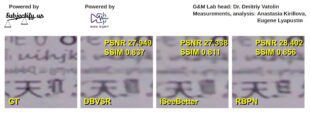As part of my First Looks review of VP8 and WebM for StreamingMedia.com, ran a bunch of VP8 and H.264 comparisons, initially using the MainConcept H.264 codec, since that’s the codec included with Sorenson Squeeze, which I used to produce the VP8 files. Then, I added some comparison files produced using the x264 codec, encoding via the QuickTime-based x264Encoder version 1.2.13 (dated 6/27/2010).
You can read the StreamingMedia article here. In this article, I present the frame comparisons that were too big to fit in the StreamingMedia article, plus present URLs for the streaming files that I created and compared. Let’s take care of the URLs first. I encoded both SD and HD files, and you can check them out here:
SD comparisons – http://www.doceo.com/SD_Comps.html
HD comparisons – http://www.doceo.com/HD_Comps.html
I present the frame comparisons below. The SD comparisons include MainConcept, VP8 and x264, the HD comparisons only include H.264 and VP8. The images are presented below in JPEG foramt. I don’t use PNGs because they take too long to load and because I’ve never seen a difference between high quality JPEGs and PNGs.
Comparisons are presented from low to high motion; click any comparison file to view the full resolution original in a separate browser window.
My conclusion? The quality difference between H.264 and VP8 just isn’t that significant. As you’ll see in the StreamingMedia article, though, the CPU required to play VP8 back these days is a real showstopper.
SD Comparisons
HD Comparisons
 Streaming Learning Center Where Streaming Professionals Learn to Excel
Streaming Learning Center Where Streaming Professionals Learn to Excel




















